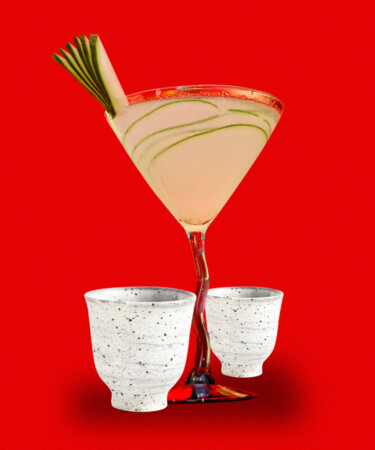Sake has long been best known as a drink to sip neat at Japanese restaurants. But as the world of Japanese bartending becomes more popular, the interest in enjoying it in cocktails is growing. While the days of sake bombs and warm ceramic vases aren’t completely lost, sake has recently taken a starring role in today’s cocktail scene.
To learn more about how sake can be used in cocktails we spoke with Cho Shintaro, co-manager of the cult-loved Sake Bar Decibel in NYC’s East Village neighborhood. The dimly lit, speakeasy-style bar, whose menu boasts over 80 sakes, has been a leader in creative sake concoctions since its 1993 debut. According to Shintaro, it is sake’s delicate yet diverse flavor profile that makes it a great contender for cocktails.
“Some sakes can have sweet essences and hints of tropical fruits like melon, banana, and apple that can create unique drinks,” Shintaro says. Sake’s flavors are derived from both the rice polishing and fermentation processes. When it comes to choosing which sake to use, asking your bartender a few questions can go a long way.
“Ginjo and daiginjo have a lower rice polishing ratio,” says Shintaro. This means that more proteins and fats have been removed, causing the remaining starch to yield a flavor that is lightly floral and fruity. Because of this, he suggests using them for fruit-forward cocktails. For sweeter cocktails, Shintaro opts for nigori, which has a creamy mouthfeel and an interesting unfiltered, almost cloudy appearance.
Sake’s delicate flavor can also be used to enhance spirit-forward cocktails; such is the case for Sake Bar Decibel’s signature Saketini. This riff on the classic Martini adds sake to the classic gin and vermouth mixture for a unique twist.
In terms of mixers, Shintaro suggests experimenting with a range of fruits. “Berries are great for cloudy sake, and citrus is great for any type of filtered sake,” he explains. Most sake ranges between 15 and 16 percent alcohol, which also makes it a great option for lower-ABV cocktails.
Creating a sake drink you like is all about experimentation, but as with any cocktail, balance is extremely important. “Although tastes are subjective, equal ratios are a good rule of thumb to keep in mind,” Shintaro says.
